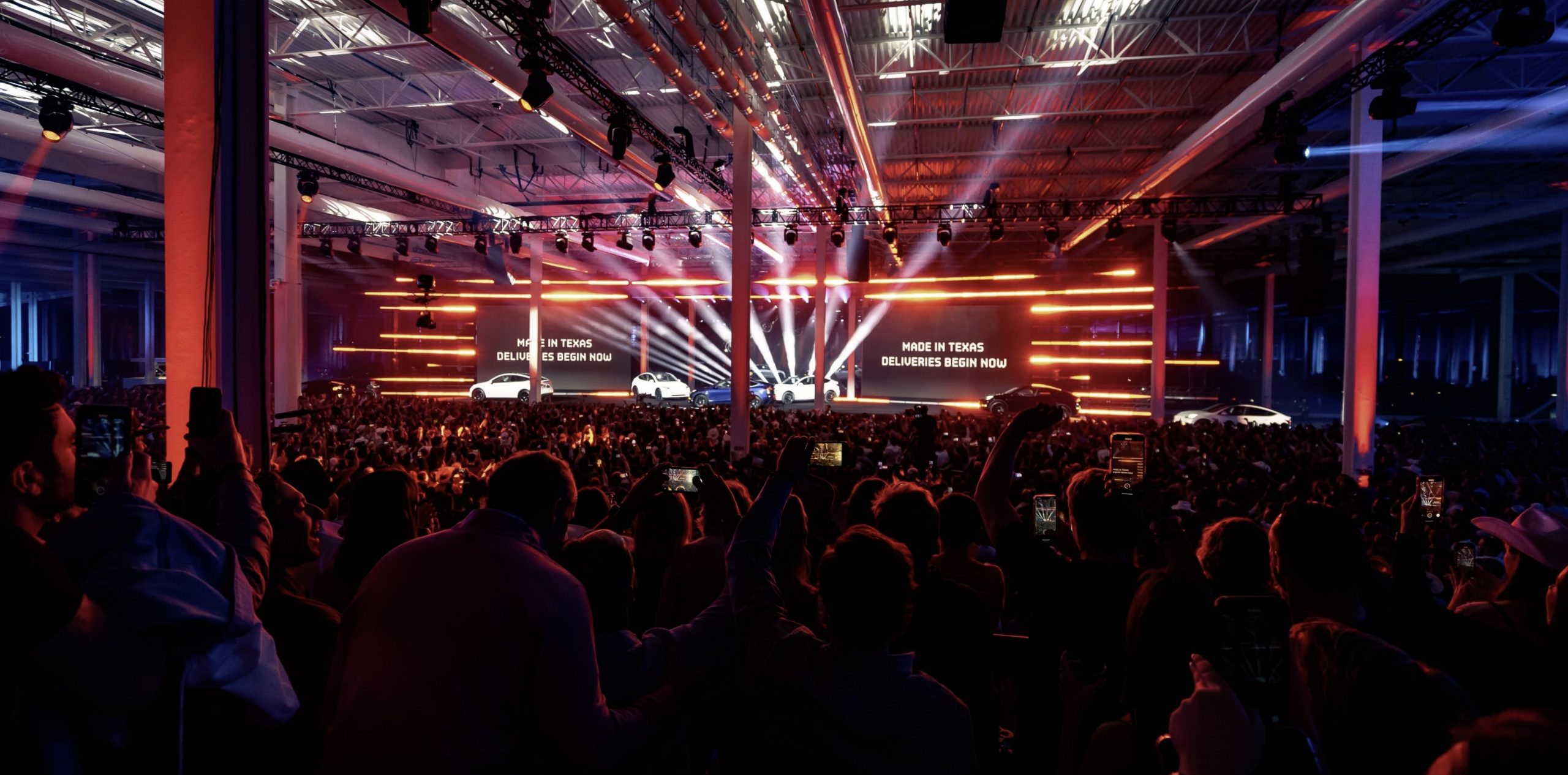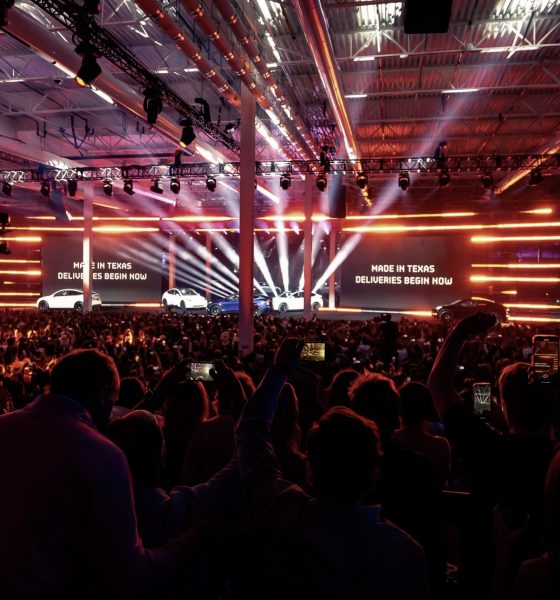Tesla’s (NASDAQ:TSLA) first-quarter 2022 earnings call comes on the heels of yet another record quarter that saw the company posting $3.6 billion GAAP operating income and an impressive 19.2% operating margin. As noted by the company in its Q1 2022 Update Letter, the company is currently focused on growing as fast as is reasonably possible.
As noted by CEO Elon Musk in previous statements, Tesla is now focused on an expansion of its production capacity. The past two months are a testament to this as the company launched not just one, but two new vehicle production plants. Both Giga Texas and Giga Berlin-Brandenburg have started delivering vehicles, and both facilities feature battery production facilities.
Despite all these projects Tesla also highlighted that it is nearly debt-free. As of the end of the first quarter, the company’s outstanding recourse debt has fallen below $0.1 billion. That’s extremely impressive for a company that is still growing at Tesla’s pace.
The following are live updates from Tesla’s Q1 2022 Earnings Call. I will be updating this article in real-time, so please keep refreshing the page to view the latest updates on this story. The first entry starts at the bottom of the page.
17:35 CDT – And that wraps up Tesla’s Q1 2022 earnings call! That was very efficient, with lots of questions answered and lots of topics covered. Thank you so much for staying with us on this live blog. We will see you again next quarter!
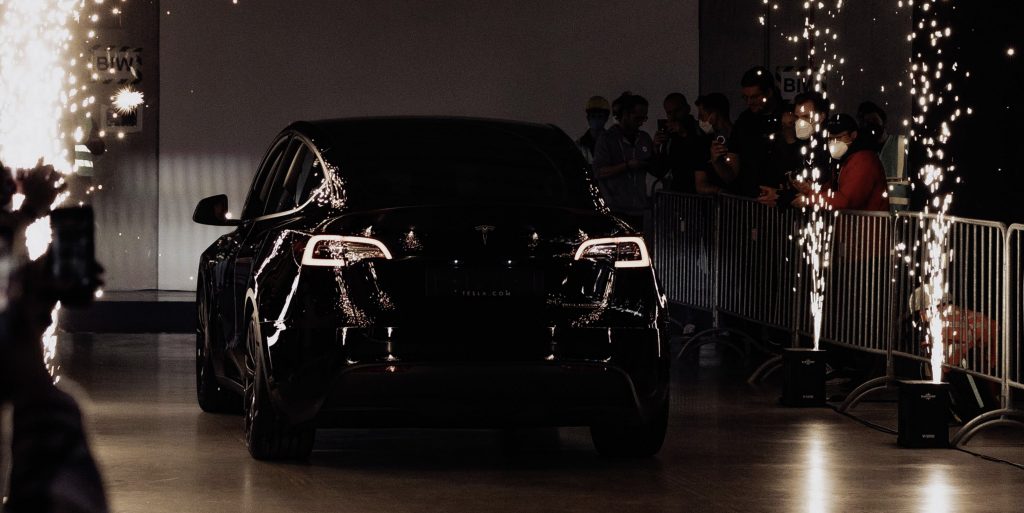
17:30 CDT – Goldman Sachs analyst Mark Delaney asks about opening the Supercharger Network. The company noted that there are plans to provide third-party vehicle access to the Supercharger Network not just in Europe, but in North America as well. There are challenges involved, but Tesla is working on them. “We want to do the right thing with respect to the whole system,” Musk said.
As for Tesla insurance, it is now the second-largest insurer of Teslas in Texas. The program is progressing well, however. Elon Musk noted that having real-time feedback on driving habits has been resulting in Tesla owners driving more carefully. Premiums are lower, and there’s extremely high retention. A real-time, fast feedback loop is incredibly useful, after all.
“We’re trying to turn a nightmare into a dream with Tesla Insurance,” Musk said, highlighting the idea that Tesla Insurance has turned into a passion project for the company.
17:28 CDT – Wells Fargo’s Colin Langan asks about how raw materials supply are built out. Tesla notes that flexibility is key to “solving” raw material challenges related to battery cells.
17:25 CDT – Piper Sandler analyst Alexander Potter asks if China’s shutdown would affect production outside the country. Elon Musk notes that this is indeed the case. “Some parts sourced in China that might impact production elsewhere,” Musk said.
In a follow-up question, Potter asked about Musk’s potential new compensation plan. The CEO stated that there are currently no plans for a new performance award.
17:22 CDT – Trip Chowdhry from Global Equities Research asks about the Cybertruck. In terms of parts, how does it compare with traditional trucks. Elon Musk noted that Tesla has not done a comparison yet, though Lars Moravy stated that the Cybertruck is simpler considering its use of megacasts. Ignoring battery cells, the Cybertruck would probably have 20-30% fewer parts than conventional pickup trucks.
As for an expansion of Giga Nevada, Elon noted that there are plans to expand the site, but the focus of expansion is currently Giga Texas.
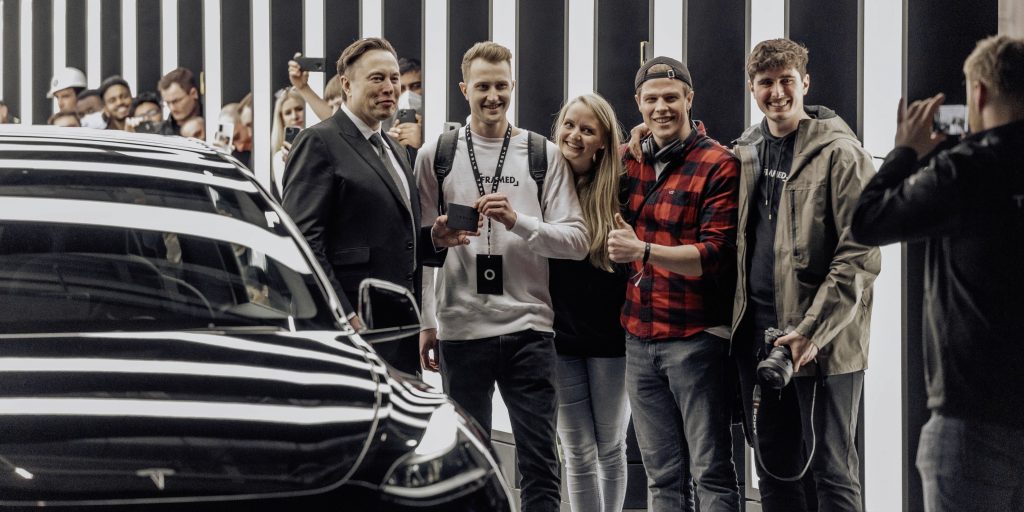
17:20 CDT – Pierre Ferragu from New Street Research asks about Tesla’s free cash flow. He notes that Tesla is sitting on a lot of cash. Musk noted that the amount may be a lot now, but it’s difficult to predict inflation. The CEO stated that Tesla would like to do something useful with the funds. “500 billion might be worth 20 billion today,” Musk said.
Kirkhorn noted that Tesla is just focused on ramping the Robotaxi and Optimus, and make decisions about what’s next after that point.
17:15 CDT – Wolfe Research Rod Lache also inquires about potential obstructions to Ev adoption. Musk notes that cell output is crucial. Tesla might need to help with lithium mining and refining for EV adoption. He also encourages young entrepreneurs to get into the Lithium business. “Do you like minting money? Well, then lithium business is for you,” Musk joked.
In response to a follow-up from the analyst, Musk noted that Tesla is hoping that it does not need to raise prices anymore. “We hope we don’t need to increase the price further,” Musk said, though he noted that Tesla does not control the prices of raw materials. “The current prices are for vehicles in the future,” Musk added.
17:10 CDT – Analyst Dan Levy CSFB notes that one of the Model 3’s goals is to make an attainable car. He notes that given the Model 3’s goal, how does Tesla look at the vehicle’s price progression. Elon noted that it’s difficult to manage inflation, though Tesla is still aiming to make its cars as attainable as possible. Musk added that suppliers are also under heavy pressure.
Musk notes that with the Robotaxi, Tesla should be able to provide consumers with the lowest cost-per-mile transport with Robotaxi and FSD. A Robotaxi ride would cost less than a subsidized bus or subway ticket, Musk stated.
17:05 CDT – A question was asked about the dedicated Robotaxi. Elon noted that a product event for the Robotaxi would be held next year, with volume production happening in 2024.
Elon noted that volume production of 4680 cells should be likely around the end of the third quarter this year. It should also be noted that 2170 non-structural pack capability is available in Texas’ Model Ys, just like their siblings in Berlin.
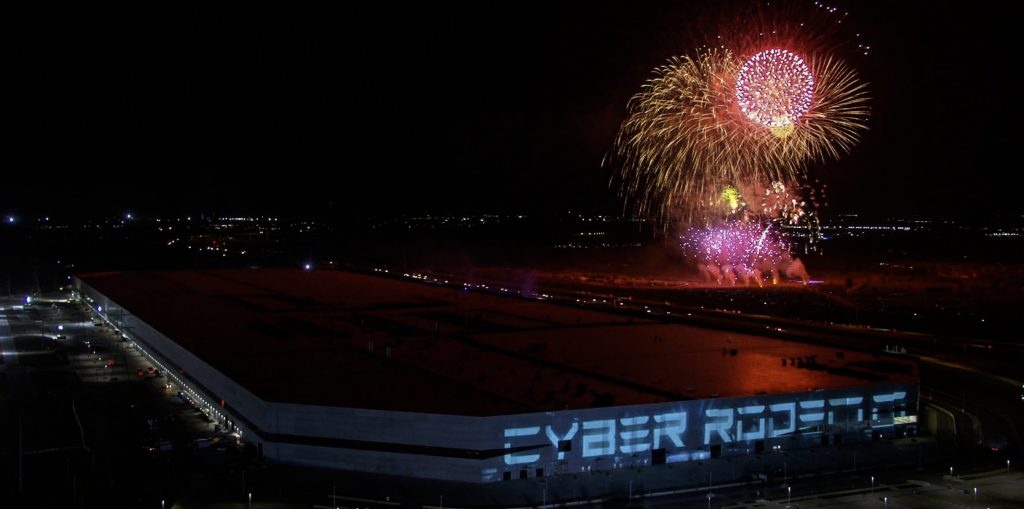
17:03 CDT – An inquiry was asked about Berlin’s ramp and if it can match Giga Shanghai. Elon noted that Giga Berlin’s ramp should be faster since Tesla has learned a lot since the company had learned a lot with its China-based factory. The CEO also noted that there are special teams to help ramp production in Berlin and Texas. Musk added that with the structural pack, the body shop gets a lot simpler.
A question was also asked about the dedicated Robotaxi. Elon noted that a product event for the Robotaxi would be held next year, with volume production happening in 2024.
17:00 CDT – A question is asked about Tesla’s plan to scale to extreme size. Elon highlighted the importance of raw materials. The CEO noted that at 5, 10, 20 million-vehicle level, Tesla will need to look closer at the macro tonnage of raw materials. Tesla, however, thinks mining and refining lithium appears to be a limiting factor.
Some lithium-related announcements are due in the months to come. Tesla is also recycling about 50 tons per week worth of battery materials today, and it is only going to get more substantial with time. Musk highlights that Tesla’s recycling efforts are not just about batteries. The company is also recycling a lot of aluminum from scrap and regular wheels from conventional cars.
16:55 CDT – A question was asked about how Tesla’s 4680 cars are performing. Senior VP Drew Baglino noted that it would take several years to properly see how the vehicles are, though Elon Musk noted that 4680 structural packs would be comparable with the best alternative packs available this year. Needless to say, Tesla is working on all the areas mentioned on Battery Day.
16:53 CDT – The next question asks about Tesla’s efforts to open direct sales on a state-by-state level. A question was also asked about why Tesla doesn’t use 800v architecture. Musk stated that the US has not really shown much interest in allowing direct sales on a federal level so Tesla has to battle anti-direct sales legislation by state. (Drew Baglino) noted that higher voltage is not necessarily better. Musk noted that the advantages are small but the costs are high.
The Tesla executives Adopting 800v architecture may be worth it in the future, but high volume is needed to make the shift worth it. The Tesla Cybertruck and the Tesla Semi are candidates for 800v architecture. But for the Robotaxi, the advantages are “basically zero.”
16:50 CDT – Kirkhorn adds some details to Elon’s answer, noting that Tesla is renegotiating contracts with its suppliers. “We’re trying to anticipate where things will go,” he said.
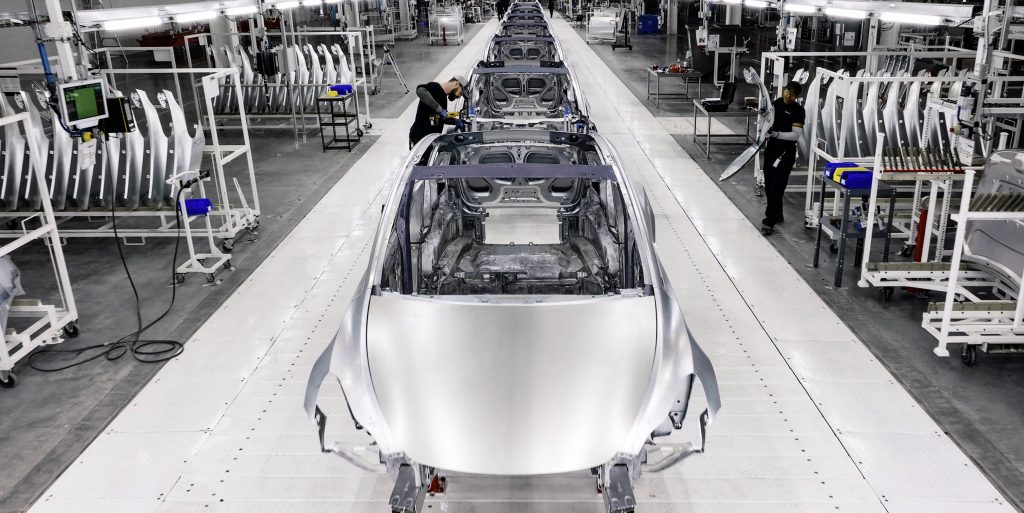
16:48 CDT – The third question is about price increases. Musk noted that it may seem unfair that Tesla is increasing its prices despite having record profits, but the demand is there. Musk explains that Tesla’s price today anticipates logistical costs in the future. Cars ordered today will be delivered months later. Tesla is still production constrained.
16:45 CDT – The second question is about Giga Shanghai’s shutdown and the localization of the supply chain in Berlin. Musk noted that Shangai did lose lots of days. “We did lose a lot of important days of production,” the CEO noted, though he stated that “Giga Shanghai is back with a vengeance,” and it would not be surprising if the facility ramps its vehicle production line never before.
“We’ll see record production from Shanghai this quarter, albeit we are missing a few weeks,” Musk said, adding that Q3 and Q4’s production numbers will be far better. He estimates that Tesla could produce 1.5 million cars this year. Musk also noted that it takes about 12 month to go from the start of production to 5,000 vehicles per week.
16:43 CDT – First question from investors is about FSD timelines. Elon’s record here is spotty at best. The CEO reiterated that FSD development has experienced many false dawns and to solve FSD, Tesla would have to solve real-world AI. This is a challenging endeavor, of course, but it’s possible. The company has been laying the pieces for this gargantuan task, as hinted by projects like Dojo.
Musk urged those who wish to get a clearer view of Tesla’s FSD technology by joining the FSD Beta program. This actually makes sense.
16:41 CDT – “Optimus will be worth more than the car business. It will be worth more than FSD. That’s my firm belief,” Musk said, stating that the importance of the Optimus project will be apparent in the coming years.
16:40 CDT – Elon talks about the “Robotaxi,” a dedicated vehicle with no steering wheels or pedals. It will be designed solely for the Robotaxi service and optimized for FSD. Target production is set for 2024. Oh, and Cybertruck production is definitely in 2023.
Elon adds that Tesla aims to achieve 20 million vehicles per year at the end of the decade. But even today, Tesla is already at 5% of this goal.
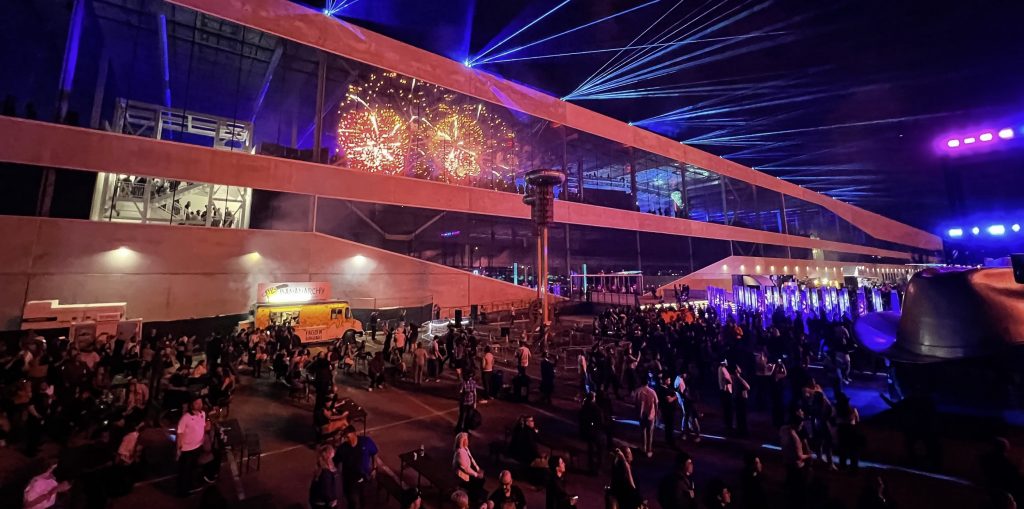
16:38 CDT – Elon takes the floor, also for another round of opening remarks. He congratulates the Tesla team for achieving record profitability despite many different headwinds. “Q1 was once again a record quarter on many levels,” Musk said.
The CEO gave recognition to the Giga Shanghai team, which is operating once more despite getting hit hard by the city’s Covid shutdowns. Just like the Kirkhorn, Musk highlighted that Teslas’ debt is all but gone. “We have a reanonable shot at a 60% increase over last year,” Musk added.
Musk also took special care to mention that Giga Berlin and Giga Texas’ initial ramp would be deliberate, but they would be growing fast. “Initial ramp always looks small, but it grows exponentially.” He predicts that Giga Berlin and Texas will achieve high volume next year.
16:35 CDT – Interesting. CFO Zach Kirkhorn is doing the opening remarks. He states that Q1 was challenging, but it was still a successful quarter for Tesla. He highlights Tesla’s key achievements in Q1. He did admit that vehicle deliveries are pretty delayed, so some vehicles delivered today would be priced lower since they were ordered in previous months.
Kirkhorn also noted that $288 million from credit revenue. He notes that the company now has more profitable vehicles, including Model Y. The CFO highlighted that Tesla has achieved a record operating margins of over 19%.
Kirkhorn also set expectations for Q2, stating that Tesla lost about a month’s worth of vehicle production in Shanghai. Giga Berlin and Texas are also just starting up.
16:31 CDT – Looks like we’re starting on time! VP of Investor Relations Martin Viecha opens the meeting. Elon is here. here we go!
16:27 CDT – Less than five minutes left. Will we start in Elon time?
16:20 CDT – Tesla’s Q1 2022 results are extremely impressive. It’s pretty crazy to see that the company is practically debt-free at this point. The ironic part is that Tesla is still rated at Ba1 or below investment grade by Moody’s Investor Service and S&P Global Ratings. Is a facepalm in order?
16:15 CDT – Welcome once more to yet another live blog of Tesla’s earnings call! Elon Musk has stated that he would be present once more, so we all know what that means. Some important announcements are coming! What are your guesses?
Disclaimer: I am long TSLA.
Don’t hesitate to contact us with news tips. Just send a message to simon@teslarati.com to give us a heads up.

Investor's Corner
Tesla stock closes at all-time high on heels of Robotaxi progress

Tesla stock (NASDAQ: TSLA) closed at an all-time high on Tuesday, jumping over 3 percent during the day and finishing at $489.88.
The price beats the previous record close, which was $479.86.
Shares have had a crazy year, dipping more than 40 percent from the start of the year. The stock then started to recover once again around late April, when its price started to climb back up from the low $200 level.
This week, Tesla started to climb toward its highest levels ever, as it was revealed on Sunday that the company was testing driverless Robotaxis in Austin. The spike in value pushed the company’s valuation to $1.63 trillion.
Tesla Robotaxi goes driverless as Musk confirms Safety Monitor removal testing
It is the seventh-most valuable company on the market currently, trailing Nvidia, Apple, Alphabet (Google), Microsoft, Amazon, and Meta.
Shares closed up $14.57 today, up over 3 percent.
The stock has gone through a lot this year, as previously mentioned. Shares tumbled in Q1 due to CEO Elon Musk’s involvement with the Department of Government Efficiency (DOGE), which pulled his attention away from his companies and left a major overhang on their valuations.
However, things started to rebound halfway through the year, and as the government started to phase out the $7,500 tax credit, demand spiked as consumers tried to take advantage of it.
Q3 deliveries were the highest in company history, and Tesla responded to the loss of the tax credit with the launch of the Model 3 and Model Y Standard.
Additionally, analysts have announced high expectations this week for the company on Wall Street as Robotaxi continues to be the focus. With autonomy within Tesla’s sights, things are moving in the direction of Robotaxi being a major catalyst for growth on the Street in the coming year.
Elon Musk
Tesla needs to come through on this one Robotaxi metric, analyst says
“We think the key focus from here will be how fast Tesla can scale driverless operations (including if Tesla’s approach to software/hardware allows it to scale significantly faster than competitors, as the company has argued), and on profitability.”

Tesla needs to come through on this one Robotaxi metric, Mark Delaney of Goldman Sachs says.
Tesla is in the process of rolling out its Robotaxi platform to areas outside of Austin and the California Bay Area. It has plans to launch in five additional cities, including Houston, Dallas, Miami, Las Vegas, and Phoenix.
However, the company’s expansion is not what the focus needs to be, according to Delaney. It’s the speed of deployment.
The analyst said:
“We think the key focus from here will be how fast Tesla can scale driverless operations (including if Tesla’s approach to software/hardware allows it to scale significantly faster than competitors, as the company has argued), and on profitability.”
Profitability will come as the Robotaxi fleet expands. Making that money will be dependent on when Tesla can initiate rides in more areas, giving more customers access to the program.
There are some additional things that the company needs to make happen ahead of the major Robotaxi expansion, one of those things is launching driverless rides in Austin, the first city in which it launched the program.
This week, Tesla started testing driverless Robotaxi rides in Austin, as two different Model Y units were spotted with no occupants, a huge step in the company’s plans for the ride-sharing platform.
Tesla Robotaxi goes driverless as Musk confirms Safety Monitor removal testing
CEO Elon Musk has been hoping to remove Safety Monitors from Robotaxis in Austin for several months, first mentioning the plan to have them out by the end of 2025 in September. He confirmed on Sunday that Tesla had officially removed vehicle occupants and started testing truly unsupervised rides.
Although Safety Monitors in Austin have been sitting in the passenger’s seat, they have still had the ability to override things in case of an emergency. After all, the ultimate goal was safety and avoiding any accidents or injuries.
Goldman Sachs reiterated its ‘Neutral’ rating and its $400 price target. Delaney said, “Tesla is making progress with its autonomous technology,” and recent developments make it evident that this is true.
Investor's Corner
Tesla gets bold Robotaxi prediction from Wall Street firm
Last week, Andrew Percoco took over Tesla analysis for Morgan Stanley from Adam Jonas, who covered the stock for years. Percoco seems to be less optimistic and bullish on Tesla shares, while still being fair and balanced in his analysis.

Tesla (NASDAQ: TSLA) received a bold Robotaxi prediction from Morgan Stanley, which anticipates a dramatic increase in the size of the company’s autonomous ride-hailing suite in the coming years.
Last week, Andrew Percoco took over Tesla analysis for Morgan Stanley from Adam Jonas, who covered the stock for years. Percoco seems to be less optimistic and bullish on Tesla shares, while still being fair and balanced in his analysis.
Percoco dug into the Robotaxi fleet and its expansion in the coming years in his latest note, released on Tuesday. The firm expects Tesla to increase the Robotaxi fleet size to 1,000 vehicles in 2026. However, that’s small-scale compared to what they expect from Tesla in a decade.
Tesla expands Robotaxi app access once again, this time on a global scale
By 2035, Morgan Stanley believes there will be one million Robotaxis on the road across multiple cities, a major jump and a considerable fleet size. We assume this means the fleet of vehicles Tesla will operate internally, and not including passenger-owned vehicles that could be added through software updates.
He also listed three specific catalysts that investors should pay attention to, as these will represent the company being on track to achieve its Robotaxi dreams:
- Opening Robotaxi to the public without a Safety Monitor. Timing is unclear, but it appears that Tesla is getting closer by the day.
- Improvement in safety metrics without the Safety Monitor. Tesla’s ability to improve its safety metrics as it scales miles driven without the Safety Monitor is imperative as it looks to scale in new states and cities in 2026.
- Cybercab start of production, targeted for April 2026. Tesla’s Cybercab is a purpose-built vehicle (no steering wheel or pedals, only two seats) that is expected to be produced through its state-of-the-art unboxed manufacturing process, offering further cost reductions and thus accelerating adoption over time.
Robotaxi stands to be one of Tesla’s most significant revenue contributors, especially as the company plans to continue expanding its ride-hailing service across the world in the coming years.
Its current deployment strategy is controlled and conservative to avoid any drastic and potentially program-ruining incidents.
So far, the program, which is active in Austin and the California Bay Area, has been widely successful.
